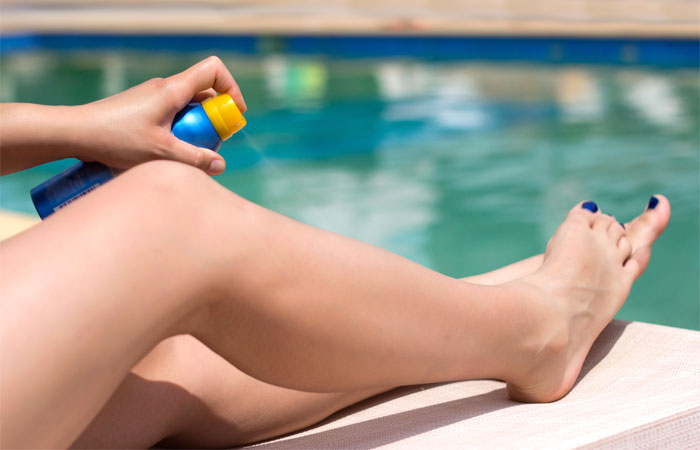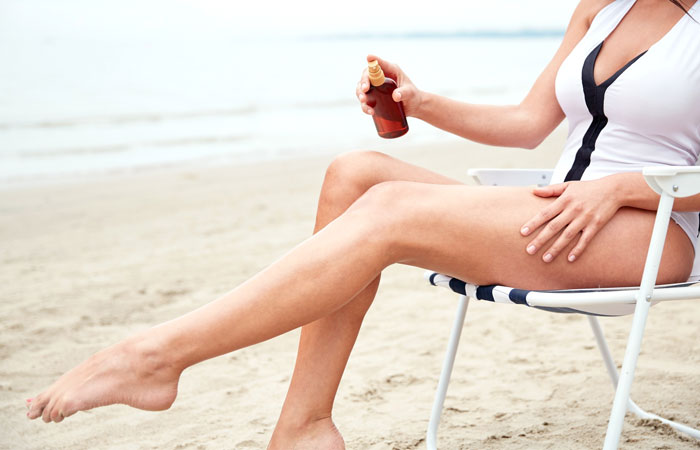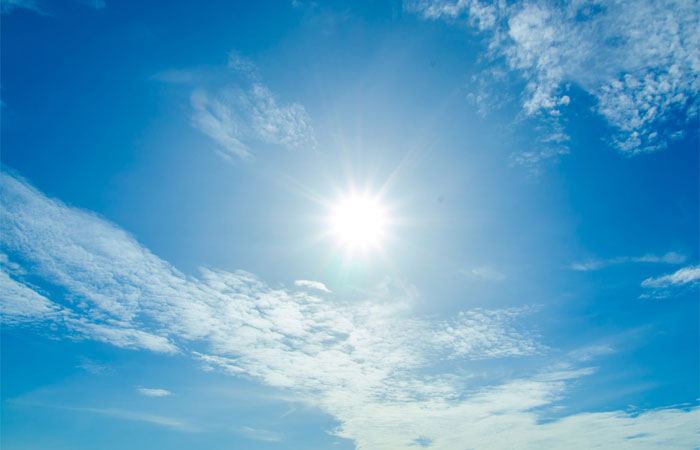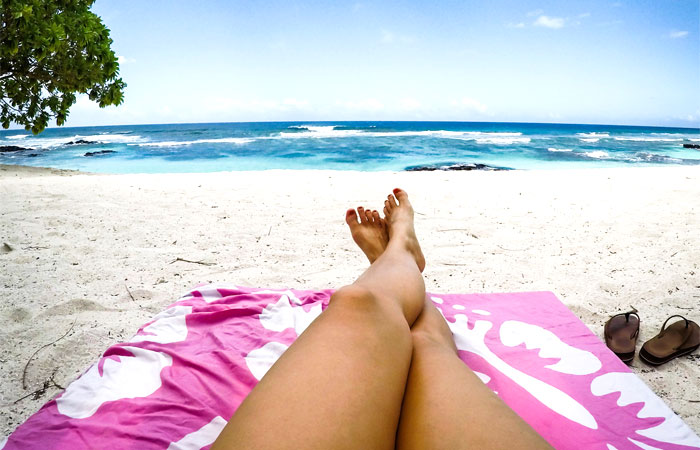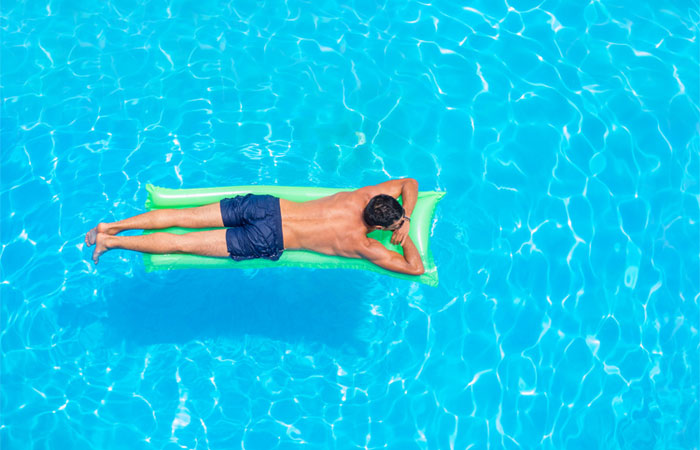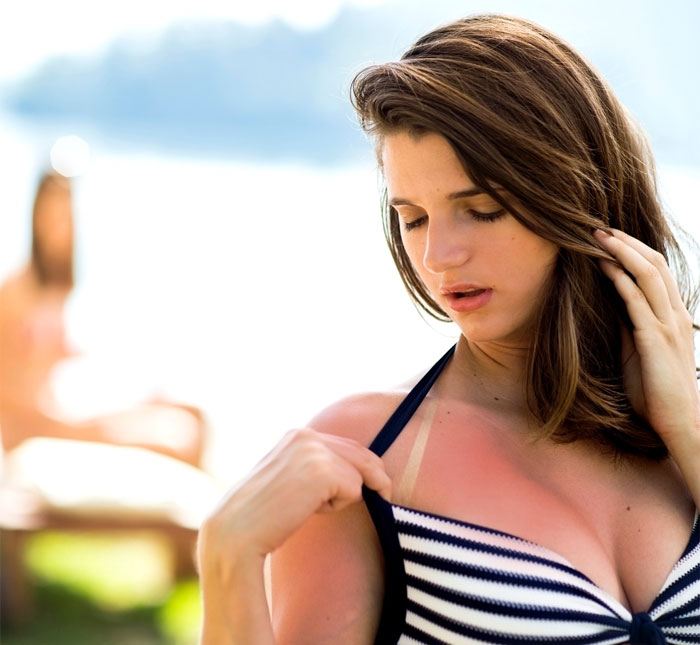Nothing says summer like a tan. Especially when after a long winter of staying indoors, our pale skin looks more “snow white” than “golden glow”.
But how do we get that sun-kissed skin? Do we slap on some tanning oil and lay in the backyard? Or slather up in sunscreen and hope those rays get through?
Before you get on your swimsuit and set up a chair, read these tips, and you’ll find out everything you need to make the most of your tan.
Table of Contents
How Long Does it Take to Get a Tan Naturally?
The amount of time it takes to tan is different for everyone. There are many factors to consider, from the intensity of the Ultraviolet (UV) rays to your natural skin tone. But no matter what, we must keep sun safety in mind.
Your goal may be to tan, but you’ll want to protect the skin from sun damage like premature aging and skin cancer.
Most individuals can expect to tan within 1 to 2 hours of being in the sun in average conditions. But some can tan quicker, while others may take a day or two to start seeing results.
Factors That Affect Tanning Time
1. Fitzpatrick Skin Type
The most important factor when it comes to tanning is your Fitzpatrick Skin Type. Also called phototype, your number on the scale is determined by the amount of melanin pigment in the skin and how it behaves in the sun.
There are 6 skin types on the scale. They range from very light skin that burns easily to very dark skin that never burns. Here is a quick breakdown of the skin types:
- Ivory Skin with Light Eyes – Always burns.
- Fair Skin with Blue Eyes – Burns easily and doesn’t tan well.
- Light to Medium Skin – Tans well but occasionally burns.
- Olive to Light Brown Skin – Tans very well and rarely burns.
- Darker Brown Skin – Always tans and almost never burns.
- Darkest Brown or Black Skin – Never burns.
2. Sunscreen
The higher the SPF, the longer it will take to get a tan or a sunburn. SPF, or sun protection factor, acts like a shade, keeping your delicate skin protected from the harshest rays of the sun.
You may think the best way to speed up the process is to not use any sunscreen or sunblock at all and let the sun have full access. But, then, you risk sunburn.
Beyond the fact that sunburns are painful and damage the skin, they also cause the skin to peel. Those peeling layers include any of the skin that has tanned and may have lingered the next day.
The FDA recommends an SPF of 15 or higher. The lower numbers on the Fitzpatrick Skin Type scale will likely need a higher SPF of 30. Sure, it may take a little longer to get a tan with SPF, but your skin won’t burn.
3. Position Of The Sun
The sun’s rays are strongest between 10 am and 4 pm. If you spend time outside before and after, your skin will tan slower but is less likely to burn.
If you are outside during those hours, your skin will get the most direct sunlight and tan faster.
4. Altitude
The earth’s atmosphere is what filters out a lot of the UV rays that can both tan and damage your skin. The higher you are in elevation, the thinner the air gets.
Anyone who has been in the mountains and found it harder to breathe has felt that thinner air firsthand. That thinner air also means that more UV rays get through which makes you tan faster in the mountains than at sea level.
5. Pre and Post-Tan Rituals
Tanning makes the outer layer of the skin darker. That means that anything that removes a layer of skin will remove some of the tan you worked so hard to get.
Every time you shave or wax, it will take off some dead skin cells and, with it, some tan. Make sure you start your tanning time with freshly shaved and exfoliated skin.
After your sun session, slather in some moisturizer to nourish your skin and keep it moisturized. Throughout the week, shave your legs only when necessary and apply lotion frequently to keep your tan in tip-top shape.
How Can I Tan Faster in the Sun?
While there are risks involved with prolonged sun exposure, there is a way to get that golden glow faster and without damaging your skin.
- Counter-intuitively, putting on sunscreen is step one. It will protect your skin and give it time to acclimate to the sun. This makes getting a tan faster because you won’t have to stop tanning to care for a sunburn.
- The next step is to take breaks. When it gets too hot, or your skin starts to look a little pink, head to the shade and rest for a bit. This increases the total amount of time you can spend in the sun.
- The last tip for a faster tan is to be consistent. Going out for a few hours one day and not again for a week will mean you have to start from scratch every time, making it take much longer to get tan. The same applies if you were to go use a sunbed at Beach Bum or LA Tan. Consistency is key.
Can I Tan Faster Without Sunscreen?
Maybe, but it’s more likely you will burn without sunscreen.
At best, sunburns keep you sidelined from the tanning game while you wait for it to heal. At worst, not wearing sunscreen can lead to sun poisoning or skin cancer. It also makes skin peel, which removes any of the tanning progress you’ve made so far.
Avoid these pitfalls and wear sunscreen with an SPF of 15-30 so you can block some of the more damaging rays of the sun. You’ll protect your skin and still get that sunkissed glow.
Does Wet Skin Tan Faster?
Sort of. Misting your skin with water does not make you tan faster. This idea likely stems from the truth that being in water can make you tan faster.
The reason why we can tan faster in or above the water is because the water reflects the sun, which in turn amplifies the sun’s rays. It’s the same idea with tanning oil, which also reflects the sun and speeds up tanning time.
Is Sun Tanning Good for Skin?
While there is some debate about this, the general consensus is no. Dermatologists say that a tan is your body’s way of protecting itself from the sun by creating more pigment.
It is good to get some sun for vitamin D, but tanning means prolonged exposure to UV rays, which can lead to premature aging and skin cancer. Even though tanning may not be good for your skin, there are ways to tan safely.
Why Do I Burn and Not Tan?
The most common reason is your Fitzpatrick skin type. Nearly everyone will burn eventually, but those with fairer skin are more likely to burn.
Another factor is how long it’s been since you’ve been in the sun. That first day out after a long winter is more likely to end in the hot, red skin of a sunburn. You have to build tolerance and take breaks from direct sunlight in the shade.
Another reason could be the position of the sun. You’re less likely to burn at 9 am than high noon.
Finally, not wearing sunscreen is a surefire way to get a sunburn. You’ve heard it before and’ll hear it again: it helps protect your skin from the most damaging UV rays.
Can I Shower After Tanning?
Yes. Unless you’re using a self-tanner or spray tanning at Sun Tan City, Palm Beach Tan, or another tanning salon, taking a shower won’t affect your tan.
While showering won’t affect the tan, shaving or exfoliating will. Remember, it removes some of the top layers of skin; the top layer is the part with the tan.
To keep your tan looking good, don’t forget to put on some lotion after your shower. A moisturized tan is a lasting tan.
Final Thoughts
When the mercury rises, and summer is in full swing, most of us want that golden glow that a tan provides. For some, anything beyond a sunburn seems impossible to get. But, with these tips and tricks, everyone can feel confident they have the knowledge needed to get sunkissed safely.

